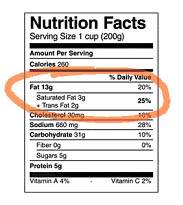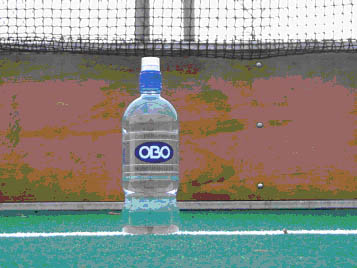These days you will see a fair amount of goalkeepers in different leagues going without full arm protection. ‘Padding down’ with a goalkeeper removing their arm guards completely to gain extra movement (without the added weight or restriction of bulky arm padding) and speed in glove saves, is often referred to as ‘going Dutch’ because of the history of their goalkeepers going ‘armless’. In Holland, hockey coaches teach their goalkeepers a method of goalkeeping that encourages an active style of play; proactively reacting to every shot, rather than simply focusing on blocking the ball.
When goalkeepers started out in hockey, there was very little kit available. Even when ice hockey protection was introduced into the game, arm guards weren’t available or produced, leaving goalkeepers to stop shots unguarded. The ball still travelled at great speed, with shots travelling at speeds of 85kph. Back in the ’80s when Ian Taylor was playing and further back than that, keepers fearlessly logged against hits and charged down short corners wearing effectively basic and poor padding. Now that’s crazy!!
Reasons
There are specific reasons for doing this; it isn’t just something taken lightly. With arm pads, goalkeepers find them bulky and restrictive. This both weighs down the goalkeeper’s arms and reduces the ability to fully move the arms, resulting in slower, restrained movements. Elbow pads can also be too tight, stopping that reflex save with the timing of reacting to an instant save on a drag flick or hard strike. With the elbow joint muscles limited by the tightness of the strapping, you cannot fully move into the save on instinct, stopped by the applied pressure.
At the higher levels of play, goalkeepers and players will make informed risks (knowing the benefits and fully aware of the potential consequences of their decision) in order to get an advantage, however great, against the opposition to get that edge in defending the goal. Assessing the risk, the chances of getting hit on the elbow are rare, but are still possible (especially when leaving it vulnerable going down on the play to block) – it is up to you to make a personal decision whether to take the risks or not.
Advantages
The benefits of losing arm protection are significant in a modern game dominated by drag flicks and speedy hits and reverse shots, where you can really make use of increased reaction times. With your arms free and unrestricted, you gain full movement to stop shots. You can now react fully to the shot, getting yourself behind the save and pushing into block and power away the ball, with the ability to move into the save with all your effort; making sure you have full concentration.
Your body also has an integral fear of being hit by anything at speed. This automatic reflex allows you to speed up your reaction to an incoming shot, literally zipping out to stop the ball. With increased speeds and flexibility to move for the save, you can react ever quicker to the ball.
Style changes
Reducing your available protection will obviously have a direct impact on the way you play, given self preservation and the option of saves open to you. The Dutch style itself is a more upright, patient style of play, staying up to challenge the shooter and cover space. Without the arms padded, it is easier to concentrate on splitting the two different levels of hit: shots below your hips and shots above them. With your leg pads dealing with low shots, it is the arms that are more active against raised shots.
You will have to be more careful being aggressive; charging out to cut down the shooter’s angle. In-close action is especially dangerous with the shot so near you and little time to react; extremely vulnerable against a mid-height shot (if you have dropped your arms to reinforce coverage around the pads). It is also important to note the related psychology. If you fear the shot, then you shouldn’t attempt blocking, as you are more likely to flinch, with your muscles tightening up and making any impact worse.
If you like to log on short corners, then you should have a spare arm pad (placed behind your goal during play), which you can put on in the interlude before the corner. This way, your extended arm is fully protected against a shot off the arm when extending out to your right. Your left arm is ok and can be brought into your body or behind the body and pads, with the glove facing out, to protect you from a direct hit.
Adapted stance
Adapting your stance allows you to take care of protecting yourself from being hit. If a shot was to undercut you and hit you square on a bare elbow there’s not much you can do for damage control!
To protect your elbows, you need to bring your gloves out in front of you to cover your elbows; have your palms facing out, blocking your elbow and arm, covering if a shot was headed there. This feels weird at first, but you will get used to it, and it’s for the best. From your stance, you can then move into the save, reacting with the shot.

You will also find that goalkeepers ‘padding down’ keep their arms tighter into the body; drawing their elbows in close to their chest/stomach. This allows them to protect the elbow by keeping it out of harm’s way – not exposed on the play to be hit.
Save making
Making saves without, you have to focus on making every save as it comes, and getting behind it to protect from being hit. You can no longer play a blocking style, since your arms are now exposed to the play: unlike before, you can’t use your arms for save or go out standing in front of a shot to block.
You should be more active with your saves, getting a glove on every raised shot and actively pushing away the rebound, driving the ball to safety on the save.
Going down against the play needs to be reconsidered as you are leaving your arms open to being hit, as is slide tackling or blocking, where you. When diving, you are just as vulnerable.
Training
At training, keepers will go back to protecting their arms: wearing their arm pads during drills to protect themselves from the odd knock. The shots you will face in a game are isolated and separated, so it is easier to protect yourself, prepared against each single shot, whereas in training balls are pelted at you non-stop, without pause.
Outfielders aren’t so nice and will often treat the goalkeeper like a human pin cushion – trying to take off your head, or carelessly smashing it at you. It is therefore an obvious decision to pad ‘back up’ again to look after yourself. Even Guus Vogels (recently retired internationally, but the established Dutch no 1 keeper for a long time until recently, and considered the world’s best) wears elbow pads at training to protect his bones.
Injuries
If you are in serious pain, and cannot move your arm at all, then you should get about consulting medical advice. A shot straight off the bare arm has obvious dangers; a crack off the elbow is especially bad. Severe bruising is the result in most cases, but a bullet of a shot could break it, leaving with a hair line fracture or full on break (putting you out for six weeks). Soft tissue damaging can result from getting hit; nerve damage can lead to eventual numbness. You can also get the equivalent of tennis elbow by landing regularly on your elbow after diving saves. Serious injuries can even require surgery.
Risks
Getting hit on the elbow is the biggest as it is the worst place to get hit (and difficult to heal). Learning to get your glove across and out in front to cover is essential. If you do go down against shots, you can bring your glove in front of the right elbow and forearm to protect against the straight strike aimed at your stick side.
Protecting skin
With sliding on bare arms for tackles or diving on the pitch surface, you can get some really nice burns. A lot of goalkeepers wear their ‘skins’ (water absorbent tops) under their chest pad to cover their elbows from shedding flesh. Some goalkeepers even wear inline/roller skating elbow pads simply to look out after their skin.
Disclaimer’s note: Going Dutch is a personal choice and is up to you to decide whether or not you want to take the risk; don’t be influenced by other keepers and the professionals or feel the need to conform if it’s not your ‘thing’ and doesn’t suit your style. It is best to give it a go once you have enough experience behind your belt and are old enough as a senior keeper to decided; too many junior keepers have been ‘welcomed’ into the bigger leagues with merciless shooters looking to hurt them so they can’t stop further shots.
Remember that you are responsible for your actions; it wasn’t the shooter’s fault they hit you (unless it was maliciously intended), you are just as much to blame. A break could put you out of the game, and you may not have a reserve keeper – costing your team the game.

 Get used to planning what you’re going to eat each day. Planning helps to stop eating whatever, whenever. Check the labels for the amount of fat, carbs, and protein they contain.This is an example of an eating plan for a player who has a light run in the morning followed by training or game in the afternoon.
Get used to planning what you’re going to eat each day. Planning helps to stop eating whatever, whenever. Check the labels for the amount of fat, carbs, and protein they contain.This is an example of an eating plan for a player who has a light run in the morning followed by training or game in the afternoon.